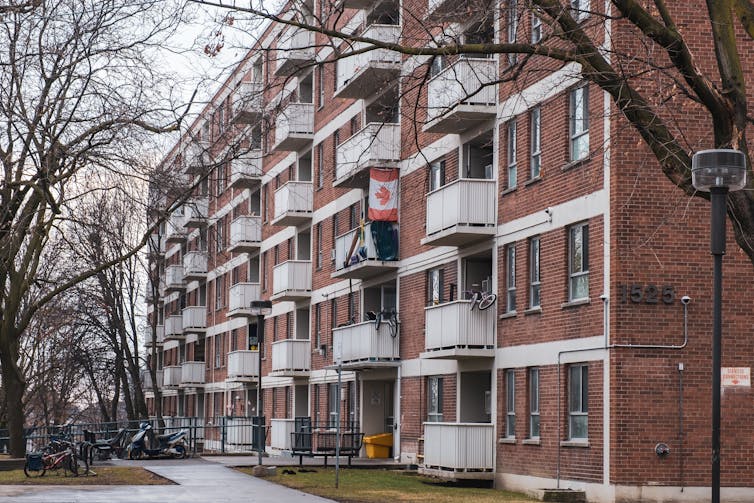, Full Professor and Associate Vice-President, Research, ;Ìý, Professor, Faculty of Education, ;Ìý, Associate Professor, Sociology and Social Anthropology, , and , Doctoral Student, Factor-Inwentash Faculty of Social Work,Â
Why do people attend college or university? While there are many reasons to do so, a widely accepted outcome of completing post-secondary education is increased opportunity. Gaining and keeping stable employment at a higher income than a high school graduate is significant.
In Canada, median incomes for bachelor’s degree graduates are . Nearly 75 per cent of employment growth in Canada is . Currently, the majority of those with . This contributes to youth unemployment.
More targeted efforts by provincial and federal governments are required to monitor and evaluate .
Recent study on youth homelessness
A recent included 1,103 youth respondents who experienced homelessness. Among these youth from 47 different communities across Canada, more than 60 per cent had a history of involvement with the child welfare system.
Those with experience in the child welfare system face emotional challenges related to trauma, abuse and neglect. In addition, they contend with multiple changes in their living situations and schools. As a result, they generally have less education: for example, than those without care experience. Consequently, they earn less income as adults.
Post-secondary graduation has the potential to transform lives and reduce unemployment. It is also a pathway for historically marginalized populations to improve their life chances and overall quality of life.
Black, Indigenous, 2SLGBTQ+ youth
Existing data indicate over a person’s lifetime. It also positively , making education a key social determinant of health.

Despite this, , and are vastly under-represented in post-secondary programs.
Providing better access to post-secondary education for former youth in care can help improve their individual circumstances. It can also address intersecting social, employment and income disparities more broadly.
Shown right: Education is a key social determinant of health. (Pexels/Newman Photographs)
Addressing barriers
Data from in April 2024 indicates that 91 per cent of Canadians agreed that post-secondary education is beneficial . The poll was conducted for the Children’s Aid Foundation of Canada.
Ninety-three per cent of . The same percentage of respondents agreed this would be beneficial for all Canadians and for our collective economic prosperity.
Considering the low income levels among those with experience in the child welfare system, and their disparities in finishing high school and post-secondary education, it’s clear greater action is needed to address barriers to education and employment.
Better data needed
Increased government efforts to bolster equitable educational opportunities and supports for people with experience with child welfare systems are needed. Actions should include collecting comprehensive, longitudinal data on indicators of success, such as:
- completing high school;
- successfully transitioning to college or university;
- getting and maintaining employment;
- securing stable housing;
- improved physical and mental health.
A lack of comprehensive longitudinal data is part of the overall problem in understanding the complex issues facing former youth in care. Scholars from the University of Kansas have offered for research with youth in foster care. Such data would better clarify whether and how current child welfare initiatives contribute to better outcomes across people’s lives.

Wrap-around supports critical
To further reduce disparities in the employment and income of those with experience in the child welfare system, we must ensure that appropriate .
Child care, mental health services and housing need to be available and accessible to ensure equitable access to education. This is supported by in Nova Scotia, New Brunswick, Prince Edward Island and Newfoundland.
Research from the United Nations Department of Economic and Social Affairs indicates that Canada is among governments falling behind in ensuring inclusive and equitable quality education and promoting life-long learning opportunities — .
A provision in the Canadian Charter of Rights and Freedoms states that However, this isn’t the case for far too many youth with child welfare system experience.
More inclusive pathways needed
It doesn’t have to be this way. In 2020, the not-for-profit organization People for Education released .
Schools, boards, policymakers and education systems can use this framework to monitor, measure and be publicly accountable for ensuring every person can access a quality education that prepares them for a brighter future.
By monitoring and evaluating core educational equity issues impacting youth with care experience, Canada can establish more inclusive and supportive pathways to education and employment. Through needed efforts, the overall quality of life of people with care experience can be vastly improved.![]()
This article is republished from under a Creative Commons license. Read the .

